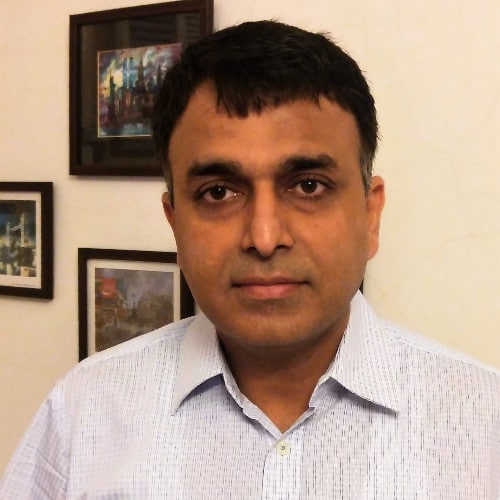NITI Aayog’s National Health Stack represents a holistic platform that supports a multitude of health verticals and their disparate branches. Vivek Mahendra, enterprise architect and chief platform officer, CallHealth, and Parag Jain, founder, ThynkBlynk, talk about how blockchain technology will work in healthcare, in conversation with Ayushee Sharma

Q. How can data stored in the blockchain be utilised to achieve better healthcare solutions?
A. Blockchain creates copies of information in any format across a network or distributed ledger. Authenticity is maintained as information is electronically signed (e-signed) at the point of creation. This also enables tracking of changes, thus making information immutable.
Blockchain ensures that the user can keep personal data anywhere and transact with it, and the recipient can refer to the blockchain ID to verify said data.

Also, if Medical Council of India (or the proposed National Medical Commission) publishes on the blockchain network that a doctor is certified to practice in India, CallHealth platform can onboard that doctor and ensure that he or she gets patients to the doctor through a common single interface.
At CallHealth, we aim to apply blockchain to various scenarios while driving compliance. For example, a prescription generated as a part of consultation or lab report on the platform would be e-signed using blockchain.
Q. How is blockchain beneficial to patients?
A. It gives them empowerment, as they are the real owners of data. With a lot more data chained together across providers, they can get a customised healthcare plan. Chances of being treated right the first time also increase, using fully reliable data points.
Blockchain enables patient portability from primary to tertiary care while enabling continuity of information across each intervention. One example is health kiosks, spread across local villages as the first point of interface to do a preliminary remote video-audio based doctor consultation to enable a second opinion prior to reaching across to an already loaded secondary or tertiary care infrastructure.
Q. What are the challenges of implementing blockchain in healthcare?
A. The biggest challenge is awareness, or the lack of it. People are trying to implement blockchain because they think it will generate outcomes cheaply and instantly, or there is a fear of losing out in the market.
Technical challenges include the amount of training required.
The Indian healthcare sector is fragmented and there is a need for support from the government and healthcare ecosystem players (such as diagnostics and radiology labs) for adoption of blockchain in India.
Q. How do companies ensure there are no patient data leaks from public blockchain?
A. By leveraging digital fingerprint implementation from the blockchain network, so that actual underlying data does not go on the network. So, even if someone starts querying, entire data on the blockchain remains anonymous.
Q. What new opportunities will emerge in the industry?
A. If there is a national health insurance number that includes health tracking linked with a unique identifier (such as Aadhaar) and mandate for data interchange, then it will not matter where a patient gets treated as long as he or she permits healthcare professionals to access the data in any hospital across India.
On the medical tourism side, data across disparate systems present in healthcare records across different countries can be made accessible at one place for enabling care continuum.
Q. What are the infrastructural requirements for an efficient blockchain implementation?
A. The biggest barrier for entry is initial investment. However, this barrier is almost nil now due to its availability as a cloud service under the cloud infrastructure paradigm shift. All that is left to do is to have the know-how and the right people.
Apart from infrastructure, human capital is essential to understand and create an operating environment and technology platform.
Q. What is setup cost and ROI for the blockchain model?
A. Setup cost can be extremely high, and if one institution or company tries to do it all by itself there is minimal or no ROI. Blockchain needs to be a part of a larger network and with adoption that spans across private and public sectors.
For care providers, blockchain can help ease the background check process before onboarding a healthcare professional to less than thirty minutes.
For a patient, ROI is driven by ensuring access to all past medical history and clinical interventions across care providers/institutions. This eliminates or minimises the need for repeat tests and faster/accurate diagnosis.
The ultimate ROI is for the bottom of the pyramid consumers in India who will start getting an efficient healthcare service at a phenomenal price point, however they need it.






